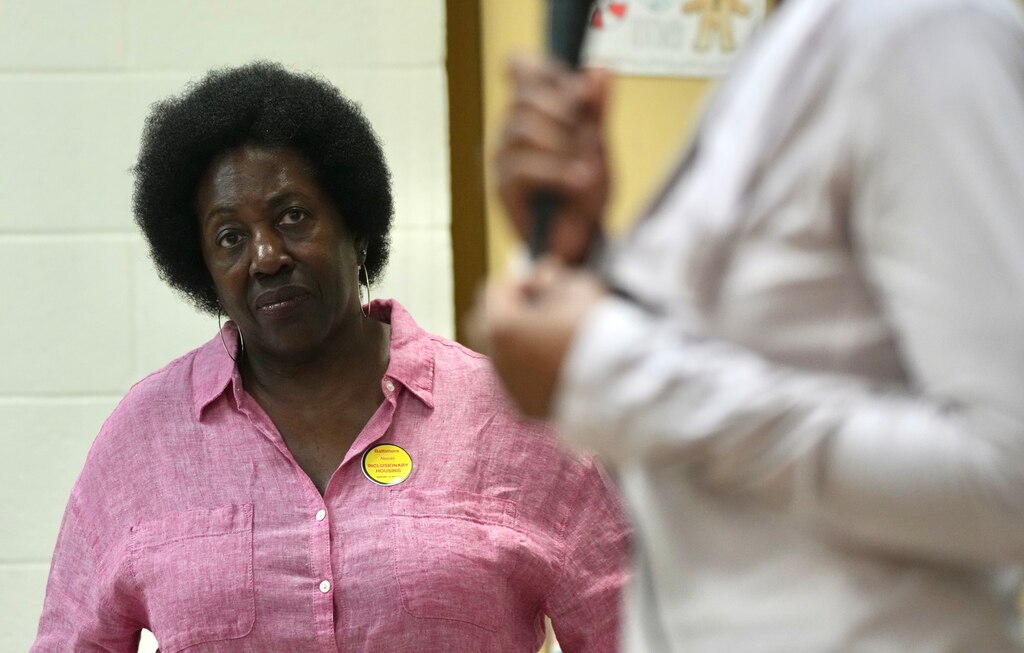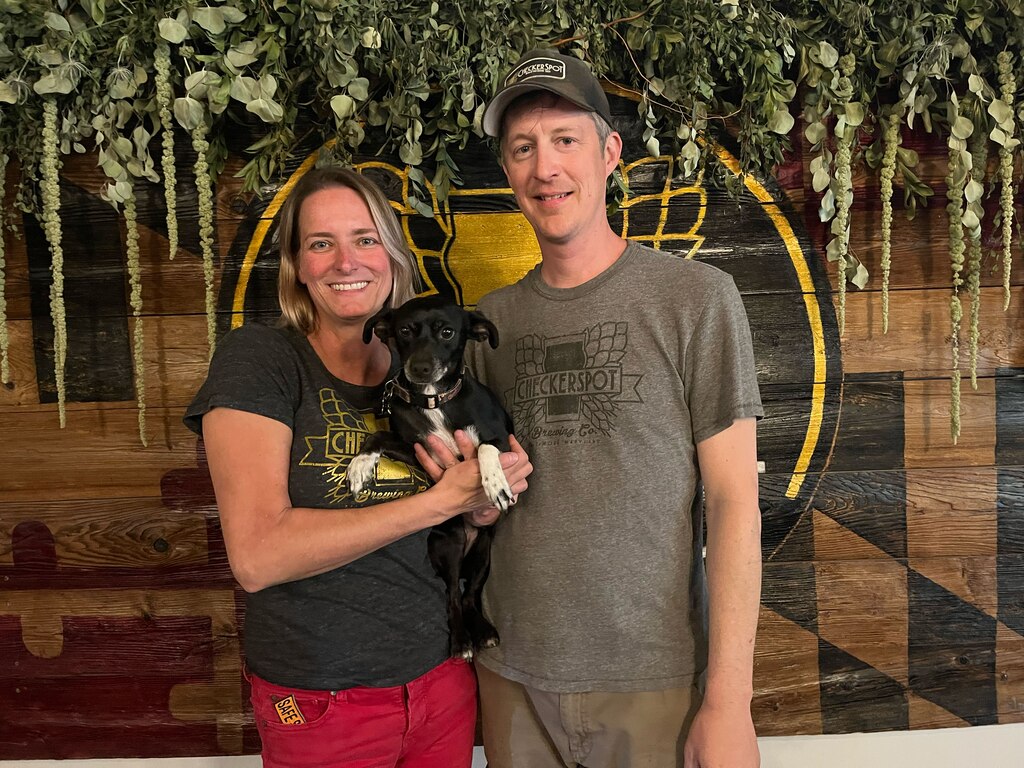Bobby Goodfellow of Ridgely’s Delight lives so close to Oriole Park that he can hear fans react to a Gunnar Henderson homer before the sound delay reaches his TV.
But on the night the Orioles clinched the American League East, he got even closer. Goodfellow was in the stands and celebrated as the center field video screen flashed a message that Gov. Wes Moore, the Maryland Stadium Authority and the Orioles had struck a deal to keep the team in town for 30 more years — a deal fans would later learn was a nonbinding agreement.
And Goodfellow, who serves as president of his neighborhood association, was so close to the suite where on that September night Moore raised his arms in victory he could have lobbed a baseball into the box.
But that’s as near as Goodfellow and a handful of key community leaders and small business owners have been to the details of a negotiation Moore, Orioles executives and state officials have promised will bring economic prosperity to their neighborhoods.
The Baltimore Banner thanks its sponsors. Become one.
Areas like Ridgely’s Delight, Pigtown, Otterbein, Sharp-Leadenhall and Carroll-Camden that border Camden Yards often bear the brunt of event-day traffic, litter and overflow parking.
These neighborhoods are just some of the communities included by Moore, Orioles CEO and Chairman John Angelos and state officials on a long list of future beneficiaries to a larger economic plan borne from a renegotiated stadium lease.
Moore and others have repeatedly claimed that a flood of economic vitality will spill from a revived Camden Yards. Even though decades of economic research has failed to show a sports stadium development — much less a renegotiated lease for an existing one — can swell a financial tide large enough to lift that many boats.
“If we have a winning franchise, inside of a stadium, that exists in a community, in a neighborhood that has not grown, then what have we done?” Moore said at an economic summit on Oct. 16.
“What comes next for the Camden Yards campus must serve our entire community and the city as a whole,” Moore and Angelos said in a July statement. “From the ballpark and surrounding neighborhoods to Harborplace and the Inner Harbor, we are committed to making the downtown corridor a premier destination that benefits Baltimore and Maryland residents year-round.”
The Baltimore Banner thanks its sponsors. Become one.
But so far, no one from the state or the Orioles has yet asked neighbors what an economic lift would look like in their community, or what they would need from a stadium redesign.

Communities and business owners: ‘Bring us to the table’
Orioles executives, including Angelos, have also floated ideas for adding community resources to the complex, like an elementary school, a health clinic, or a workforce training space.
Betty Bland-Thomas of the Sharp-Leadenhall neighborhood said she’d not heard of city, state or the Orioles asking residents what they need, but from her decades of experience as a civic organizer, she said communities should be involved from the beginning.
“Bring us to the table, let us know, let us tell you some of our ideas,” Bland-Thomas said, echoing the voices of community and business owners who spoke with The Banner.
She said she could think of many ways to spend $600 million in Baltimore City, quoting the amount of debt lawmakers agreed to take on in 2022 to finance Oriole Park improvements inside the stadium once a multidecade lease was signed. Moore repeatedly said the parties will meet the Dec. 31 signing deadline.
The Baltimore Banner thanks its sponsors. Become one.
In addition to the taxpayer-backed debt, the deal’s framework gives the Orioles private development rights on state-owned property and eliminates the team’s rent. The Orioles would get control of stadium operations and maintenance, and the state will chip in $3.3 million a year from cost savings.
Officials have described a renovated work-live-play district along with plans to invite private developers to reimagine underutilized space in the B&O Warehouse and Camden Station. In exchange, the Orioles will pay $94 million in rent on that space over the next 99 years.
Administration officials told reporters the goal is a plan that’s equitable and accountable to both the communities directly adjacent to Camden Yards and to taxpayers across the state.
But Bland-Thomas questions what will change during a stadium upgrade. Pressed between Camden Yards and Federal Hill, her historically Black neighborhood has regularly battled gentrification, high-priced housing developments, and a lack of financial resources for green spaces and recreation centers. Bladen-Thomas also asked how much more entertainment development her neighborhood could bear, after traffic from a concert scheduled on a recent game day shut down her neighborhood.
“How can you expect us to be supportive in a situation where you just totally ignored us?” she asked.
The Baltimore Banner thanks its sponsors. Become one.
She said she wants to see stronger leadership from Moore and politicians at all levels of government when it comes to bargaining with taxpayer money.
“We cannot continue to fund those that have a lot,” she said. “Look at spreading that money to help those who have not.”

Moore spokesperson Carter Elliott IV said in a statement that specifics of the final deal are still being worked out, but added the administration “will provide more details about the development process, community impact, and how the State and the Orioles will partner to make this vision a reality.” Elliott did not say when those details would be shared.
“Governor Moore has been clear that any deal must unlock private investment to drive economic growth and benefit the broader community,” Elliott said.
State funds will only be spent on the stadium, Elliott said, leaving the team to partner with the private sector to finance renovations within the footprint of the complex.
The Baltimore Banner thanks its sponsors. Become one.
Camden Yards has provided economic stability for years, Elliott said; new development “will bring more and more people downtown in the years to come, providing increased opportunity for neighborhood businesses.”
Recent studies by Kennesaw State economist J.C. Bradbury on Atlanta’s The Battery, a live-work-play complex built around the Braves’ stadium that Angelos has cited as “the best idea of what’s possible,” found no significant increase in commercial tax revenues or property assessments five to six years after it opened.
It took about that long for Cobb County, Georgia, the jurisdiction that leveraged hundreds of millions in municipal bonds to build the stadium, to net enough revenue that county taxpayers weren’t making up the difference on debt service payments.
The Braves organization, which includes the baseball team and the entertainment complex, reported making $588 million that same year, according to Forbes.
Despite repeated commitments to answer detailed questions about the public benefits of stadium renovations for these neighborhoods, the Maryland Stadium Authority did not respond before publication, even after being given an extension.
The Baltimore Banner thanks its sponsors. Become one.
Kerry Watson, Orioles public affairs vice president, said in a statement the team has “conducted research over the last several months to gauge direction and interest from our community as to what they feel the needs are,” and will be using that feedback to guide their decision-making process and engaging with their Baltimore neighbors and the broader Maryland community.
A source familiar with the Orioles’ processes noted the research ranged from statewide polling to narrower focus groups, but did not say who made up those focus groups.
A representative for Angelos and a spokesperson for Baltimore City officials did not respond to requests for comment. Maryland’s top legislative leaders, Senate President Bill Ferguson and House Speaker Adrienne A. Jones, both Democrats, said they’ll wait until a lease has been completed before they weigh in.
Stadium complex ‘an island’ amid neighbors
In Pigtown, Kim Lane said the closest collaboration in recent years between her neighborhood and the Orioles was when an Oriole Park food vendor named a barbecue sandwich the Pigtown Stack.
Lane serves as the executive director of Pigtown Main Street, a nonprofit working to revitalize the Washington Boulevard commercial corridor.
For this renovation of Oriole Park, Lane said, “They [the Orioles] need to engage the people in the neighborhoods who are invested, who are already doing the work, who live here.” And she has some ideas.
Perhaps building pedestrian walkways and posting signage to other business districts could improve accessibility to the stadium complex and drive customers to other parts of town, she said.
Now, she said, the stadium complex is “an island” and connectivity could benefit everyone. If fans continue to travel in and out of the city just for a game, it would be a missed opportunity.
On inviting private developers onto state-owned land, Ridgely’s Delight’s Goodfellow said he’s unsure whether the developers would have the same incentives as state officials to create vibrant, livable neighborhoods around the stadium.
”I don’t think that private industry has the same values [as the government],” he said, suggesting the state could mandate a revenue sharing program similar to what was done with casino money.
Transparency creates a ‘win-win’
Some nearby business owners said they would welcome increased customer traffic and hope to be included in planning.
“I actually think it’s going to be a great thing for the area, to bring in more restaurants and just more atmosphere and more energy,” said Eric Cotton, owner of Pickles Pub, a popular pregame meetup location situated across Washington Boulevard from Oriole Park’s gates.
The 30-year business owner doesn’t fear competition to his businesses — which, in addition to Pickles, includes Pizzaria Di Sottaceti and Sugarmore — but thinks the development might bring even more visitors.
In past years, he’s had a Pickles stand inside the Camden Yards complex. And in previous discussions about redeveloping the stadium area, Pickles has been included in the footprint. But he has not heard from Orioles headquarters during this current round of negotiations.

Checkerspot Brewing Company Owner Judith Neff did get a call from the O’s in February. The team wanted to designate her Carroll-Camden bar and restaurant as a promotional stop for their “Birdland Caravan,” a traveling pep rally of Orioles players that shuttled between high school auditoriums, hotels and breweries around the state. The one-night visit gave O’s fans the chance to meet players, built excitement for the upcoming season and boosted Neff’s nightly receipts.
Neff, who also serves as vice president for the Carroll-Camden Business Association, said her colleagues are doing their best to revitalize the area, but would invite the help of private enterprise to clear out blight and improve security, she said.
“They know what Camden Yards needs, but they’re not familiar with any of the surrounding area,” she said.
She’d also like to give the Orioles a chance to set their neighbors’ expectations, a step she said would save everyone time and money.
“The more transparency with something like this, especially something that’s not 100% private funding,” she said, “it just creates a win-win situation.”
Baltimore Banner reporters Andy Kostka and Hallie Miller contributed to this article.




Comments
Welcome to The Banner's subscriber-only commenting community. Please review our community guidelines.